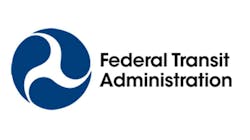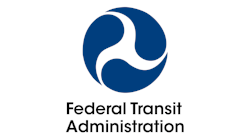FTA releases NPRM on revisions to Public Transportation Agency Safety Plans regulation

The Federal Transit Administration (FTA) released proposed revisions to the Public Transportation Agency Safety Plans (PTASP) regulation that are authorized under the Infrastructure Investment and Jobs Act. A Notice of Proposed Rulemaking will be published in the Federal Register the week of April 23 and comments can be submitted over a 60-day period.
While most of the proposed rule changes impact agencies operating in large urbanized areas, agencies serving areas with populations less than 200,000, will be impacted by a statutory requirement to develop their agency safety plans in cooperation with frontline transit worker representatives. FTA estimates this change will impact 280 agencies operating in small urbanized areas but explains in the proposed rule “most agencies already involve frontline transit worker representatives and would only need to spend time on associated reporting.”
For agencies operating in large urbanized area, the proposed rule revisions include:
- The establishment of safety committees with voting members consisting of an equal number of frontline transit worker representatives and management representatives. The proposed rule includes guidance on membership, procedures and responsibilities of an agency’s safety committee. For example, procedures to address disputes and tie votes.
- The establishment of risk reduction programs to reduce the number and rates of safety events, injuries and assaults on transit workers and establishing annual targets based on measure that will be established by the FTA in the upcoming National Public Transportation Safety Plan. These programs would include:
- Evaluating assaults on transit workers and vehicular/pedestrian safety risks and considering corrective strategies and
- Deploying certain assault mitigation measures when a risk analysis performed by the safety committee determines such measures would reduce assaults on transit workers.
- Should an agency not meet its safety risk reduction program safety performance target, the agency will allocate at least 0.75 percent of its section 5307 funds to safety-related projects.
- Staff training should include de-escalation training and include maintenance personnel.
- The proposed rule also includes language to clarify the incorporation of guidelines from the CDC or State health authority regarding exposure to infections diseases.
In addition, there are updated or new definitions in the rule including a new definition of “transit worker” to include employees, contractors and volunteers working on behalf of a transit agency.
“This definition would ensure that transit worker-related requirements, such as training, will apply to volunteers, such as volunteer transit operators who are a crucial part of the staff at some transit agencies, especially in rural areas,” the proposed rule states.
The proposed rule can be viewed on FTA’s website.

Mischa Wanek-Libman | Group Editorial Director
Mischa Wanek-Libman is director of communications with Transdev North America. She has more than 20 years of experience working in the transportation industry covering construction projects, engineering challenges, transit and rail operations and best practices.
Wanek-Libman has held top editorial positions at freight rail and public transportation business-to-business publications including as editor-in-chief and editorial director of Mass Transit from 2018-2024. She has been recognized for editorial excellence through her individual work, as well as for collaborative content.
She is an active member of the American Public Transportation Association's Marketing and Communications Committee and served 14 years as a Board Observer on the National Railroad Construction and Maintenance Association (NRC) Board of Directors.
She is a graduate of Drake University in Des Moines, Iowa, where she earned a Bachelor of Arts degree in Journalism and Mass Communication.


